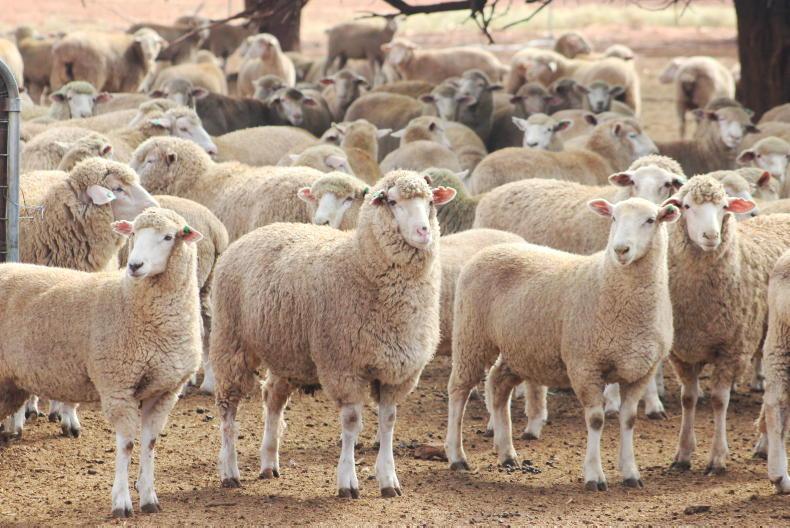The UK market accounted for 47% of Irish beef exports in value terms last year, up from 44% in 2022.
We take a look at the performance of Irish beef in Britain and Bord Bia’s efforts to support the market.
UK beef production is expected to remain stable in 2024 with the latest forecasts from the Agriculture and Horticulture Development Board (AHDB), the levy board in England, indicating a 0.2% increase in the volume of beef processed to 902,000 tonnes.
Despite the reduction in the UK cattle herd over the last decade or so, the volume of beef produced has remained relatively constant.
A growing number of better-quality beef-sired animals sourced from the dairy herd has been a key factor in maintaining this level of output.
Cattle population figures indicate a slight increase in the number of slaughter age cattle on UK farms at the start of this year, which will ultimately contribute to an increase in cattle availability for processing as 2024 progresses.
There has also been a suggestion that more heifers will be available for processing given the ongoing decline in beef and dairy cow numbers and a reduced demand for replacement breeding heifers as a result.
Overall, the prime cattle kill is expected to increase by 1% in 2024 to 2.06m head. Given the age profile of the animals available, prime cattle numbers in the UK are expected to remain steady for much of 2024, before tightening in Q4 and in the early months of 2025.
The number of cows processed in the UK is forecast to decline by 2% in 2024 to 600,000 head, although with ongoing uncertainties in the dairy sector with low milk prices, there is potential for this to be revised upwards later in the year.
High costs of production, market volatility and reducing direct subsidies are all factors that could contribute to higher than anticipated levels of cow slaughtering during 2024.
Stable UK beef trade
There continues to be stability in the UK beef trade, with prime cattle prices holding steady for much of April and into early May 2024.
The R3 steer price for the week ending 5 May 2024 was the equivalent of 568c/kg. For comparison purposes, the price in the corresponding week last year was 559c/kg.
Meanwhile, in the Republic of Ireland, the R3 steer price in the week ending 5 May 2024 was 522c/kg, some 46c/kg behind the UK price.
The UK has maintained a significant price differential over Irish beef for much of the year to date and this has created a growing demand for Irish beef in the market, a trend that has helped to keep Irish deadweight prices ahead of the EU benchmark price in recent weeks.
The UK was the biggest and most valuable market for Irish beef exports in 2023, taking some 233,506t of product, equating to almost half of all Irish beef exports last year.
Export data for the first two months of 2024 (latest available at time of print) have indicated a firm start to the year, with 39,349t exported to the market – a 5% increase from the previous year’s levels.
There has been a similar increase recorded in the value of beef exports to the UK in the early months of the year, up by 6% to €212m.
UK imports
The UK is a net importer of beef and Ireland is its largest supplier, accounting for over 70% of the UK’s beef imports.
Poland, Netherlands, France, Germany and Spain account for the bulk of the remainder of imports from the EU. Just over 7,000t of beef were imported into the UK from South America (primarily Brazil and Uruguay), while 1,905t were imported from Australia and just over 1,800t from New Zealand.
Total non-EU beef imports were just over 12,000t last year, which represents 5% of total UK beef imports.
UK beef retail overview
Irish beef commands a strong position across the UK. Irish beef is the only imported beef that is available continually in the mainstream UK grocery sector and is stocked by major retailers such as Asda, Tesco and Sainsbury’s.
In recent years, we have seen an increase in organic Irish beef in the UK market with premium online retailer Ocado listing the product year-round.
Strong Irish beef retail sales in UK
According to Kantar retail data, in the 52 weeks to 14 April 2024, the volume of Irish beef sold into the UK retail channel rose by 16% (when compared with April 2023).
At the same time, the quantity of all beef sold into UK retail decreased by 1.1%, demonstrating that despite falling UK beef consumption, Irish beef still commands a strong position in the market.
In terms of cut popularity, mince beef is the most popular beef product in the UK, with sales of £978.6m (€1.137bn) in the 52-week period to 14 April this year. This was down marginally (0.5%) on the previous year.
Sales of steaks in UK retail rose by 2.2%, while stewing beef continues to suffer with the most extreme reduction of 12.7% in sales to £389.6m (€453m) (over a 52-week period).
This is a long-term trend, which has seen mince and steak categories growing at the expense of roasting joints and stewing beef.
Much of this is driven by shoppers looking for quick midweek meals, with mince and frying steaks seen as a quicker, more convenient choice.
Long-established UK-Irish beef trading relationship
The UK market has a long-standing and robust relationship with Irish beef, a connection that is underpinned by several key factors. The similarity in beef production systems between Ireland and Britain, both favouring suckler cows and steer beef over young bulls, has fostered a sense of familiarity.
In recent times, Irish beef and sheep processing companies have established themselves as leading processors in Britain.
Quality Assurance is an indispensable requirement for all premium export markets, with the UK spearheading the demand for Quality Assurance across all market segments. The Bord Bia Sustainable Beef and Lamb Scheme enjoys widespread recognition and acceptance by all UK beef customers as being on par with various UK schemes.
UK consumer tracking
The UK shopper places a very high level of trust in Ireland as a source of food.
In the most recent study undertaken by Red Tractor on consumer trust, Ireland topped the poll as the most trusted country for food among respondents.
Seventy-four per cent of respondents said they trust food from Ireland, followed by the UK at 73%.
The acceptance of Irish beef in the UK is further underlined by research by Bord Bia’s Thinking House, which undertakes ongoing consumer studies in the UK.
This includes an Irish beef ‘brand health check’ and a meat shopper report every three months. This research highlights that four in five UK shoppers are familiar with Irish beef and two in three shoppers would consider purchasing beef of Irish origin in the future.
Promoting Quality Assured Irish beef
Bord Bia cannot promote Irish beef on a country-of-origin basis (ie ‘choose Irish beef’) due to state aid rules. Instead, Bord Bia focuses on the quality, taste and the nutritional benefits of Irish beef as opposed to its Irishness alone.
That means that Quality Assurance and Origin Green are the cornerstones of all Bord Bia beef promotions.
Our campaigns have contributed to a strong growth in awareness of Ireland as a source of beef, with total awareness of Ireland at 81% just surpassed only by English beef at 83%.
Last summer, Irish beef partnered with chef Ruben Dawnay to showcase Irish beef during barbecue season. The Irish beef barbecue bike popped up across London serving QA Irish beef to locals.
Audit data shows adoption of key measures on beef farms
Beef farmers are taking measures to reduce farm emissions, as shown by recent audit data. Results from SBLAS audits conducted in 2023 show an increase in the use of LESS technology and a fall in the use of the splash plate (Figure 1).
Soil testing is being carried on at a high rate with 70% of SBLAS members reporting that they soil tested in the previous year.
SBLAS farmers use low rates of chemical N with an average of 78kg per hectare over the past three years.
Lime application has increased significantly, with 26% of beef members reporting that they applied lime, up from 9% in 2021. The use of CAN-based fertilisers is falling.
Last year, CAN accounted for 75% of chemical N applied, having accounted for 85% of all chemical N applied in 2021 (Figure 2). Five years ago, CAN accounted for 90% of chemical N applied.










SHARING OPTIONS